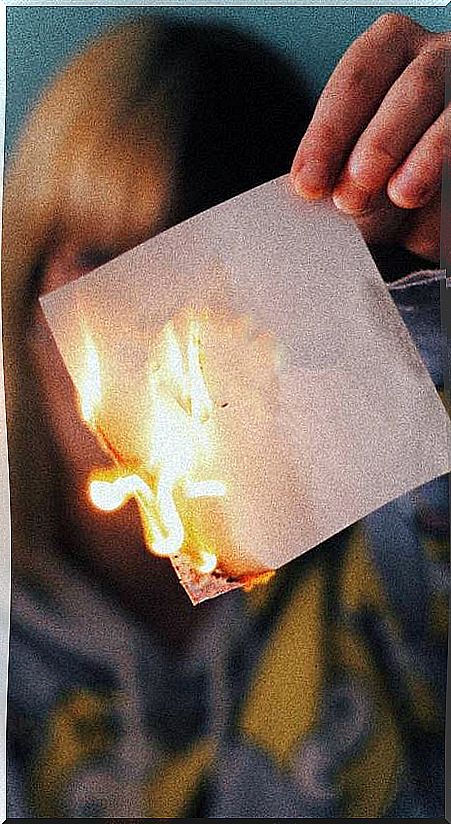Psychological Benefits Of Therapeutic Rituals
Rituals work in therapy as a powerful psychological tool that helps to anchor and enhance the work done in therapeutic sessions. At an unconscious level, they promote the achievement of the objectives set.

Various studies have shown in recent decades the emotional benefits that rituals bring, even in people who are not necessarily religious. In psychology, used therapeutically, rituals are very useful. For example, in this article I explain the case of Clara, who helped to heal her emotional wounds by burning at the stake a list of destructive phrases that she remembered hearing from her father.
The ritual should not be taken as an end in itself, but as a support tool for therapy. Using them in this way, they become great allies of psychology.
What are rituals used for in psychology?
The main contribution of rituals, when used as a therapeutic element, is that they set in motion powerful unconscious mechanisms of our mind that help us focus and achieve the goal set in therapy (overcome a break, reinforce self-esteem or dare to do that how much it costs us).
Its operation is similar to that of the placebo effect, working at the unconscious level to help the person heal.
However, there is a very significant difference in the effectiveness of both methods. The placebo loses its effectiveness when the person discovers the “deception”, while the ritual, although it is evident and is carried out consciously, continues to work without problem.
It does not matter that the person knows that the ritual is something symbolic, without value in itself, because they know that it is an intermediate step that helps them achieve an internal psychological goal that, otherwise, could take much longer to achieve.
In order to understand this difference, we can use the example of Clara, a 60-year-old woman who came to my office overwhelmed by the weight of a past marked by a controlling and authoritarian father.
The example of the ritual that helped Clara heal her wounds
Until her father’s death, Clara was subjected to continuous psychological abuse. He spent his entire childhood and youth tormented by the negative messages he received from his father. Phrases such as “You are useless”, “you are not going to achieve anything in life” or “no one is going to love you if you are like that”, for four decades, marked his day to day.
Being the little sister, the last one left at home, and her mother having died when she was 10 years old, her father did not want her to leave home and psychologically manipulated her to achieve it.
Due to all this mistreatment, Clara’s self-esteem was shattered and she was unable to get a job that would allow her to become independent. She lived as a slave to her father until his father died, when she was 40 years old.
The death of her father was a liberation for her. Clara was finally able to start a normal working life.
However, 20 years after her death, when she came to my office, Clara still felt the weight of her father on her shoulders.
In one of his sessions he told me: “Ramón, I feel that a great black cloud is always chasing me, at all hours. Wherever I go I feel it heavy on my shoulders ”.
As a ritual to start releasing that dark cloud, I proposed to Clara to make a compilation of all the negative phrases that she remembered from her father. In a few days, he managed to compile a list of more than 50 destructive and demotivating phrases that his father spat at him for more than 40 years.
Coinciding with the anniversary of her father’s death (dates are important when organizing rituals), Clara made a bonfire to burn all those phrases and let them go with the fire and smoke. This ritual served to begin to free himself of that heavy cloud that he noticed above her.
However, since these negative messages were repeated for so many years, Clara felt that, at times, she still heard her father’s voice. In therapy, we work to reprogram these negative ideas and change, in a few months, a lifetime of negativity and low self-esteem.
It is precisely in this phase that the rituals show their effectiveness in complementing the therapy and approaching the therapeutic work more quickly.
The next step that Clara took in her liberation process was to take the ashes of all the papers that she had burned to her father’s grave. She imagined a conversation with him, in which she told him that she no longer wanted to carry on with all her miseries and that she no longer wanted to continue having him in her life. Following this statement, Clara left the ashes of the ill-treatment received there and left.
Clara was not religious and did not think she was actually talking to her father, but she experienced this second ritual as an internal process of personal liberation. She knew that every time she remembered the bonfire scene and the words she had said to her father, her brain would work to reprogram her learnings and free her from all the weight of the mistreatment she had received.









